Irkutsk is home to a wide variety of unique bird species. Located in eastern Siberia, Irkutsk is a paradise for birdwatchers and those interested in ornithology. The region is home to a diverse range of species, including both migratory and non-migratory birds.
There are more than 260 species of birds that have been recorded in the region. Some of the notable species include the Black-billed Capercaillie, Eurasian Wryneck, Grey-headed Woodpecker, and Siberian Jay.
These birds are found in various habitats, from the taiga, steppe, and wetlands to the rivers and lakes of the region. Irkutsk is a great place to observe these birds, and even take part in birdwatching tours.
1. Siberian Crane
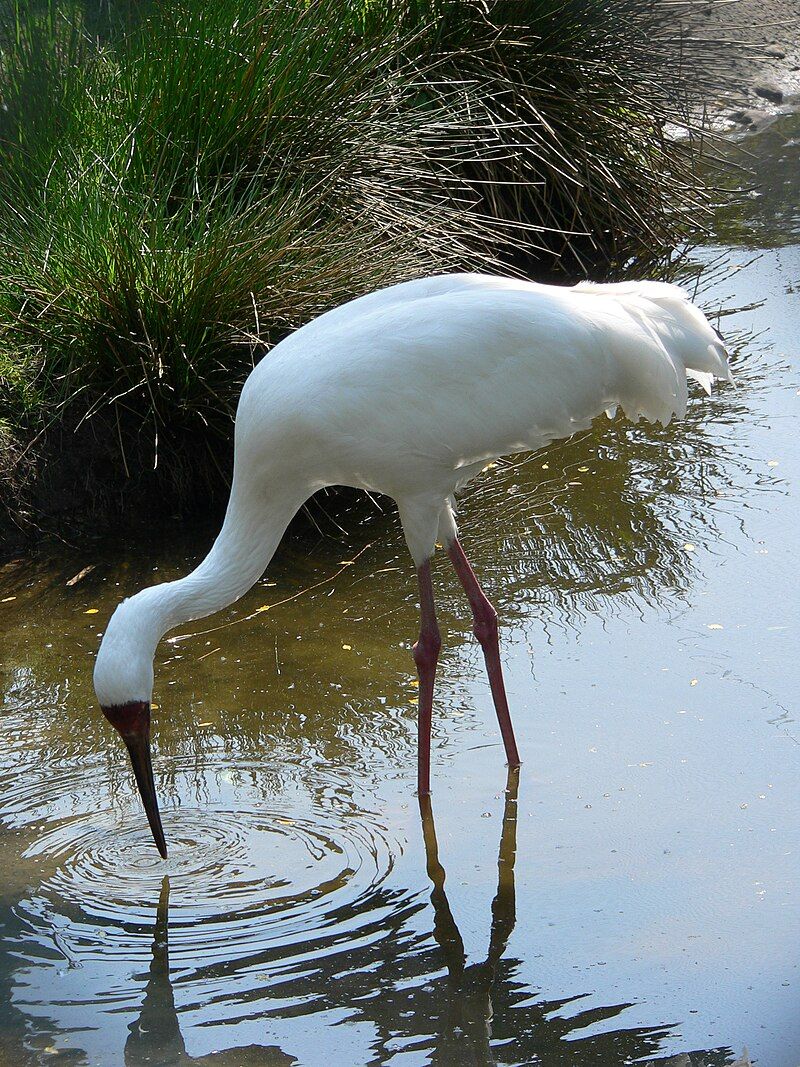
The Siberian crane is a beautiful and majestic bird belonging to the family Gruidae, also known as the crane family. It is also sometimes referred to as the Siberian white crane or the snow crane.
It is a large species of crane, typically measuring between 115 to 135 cm in length and having a wingspan of between 190 to 230 cm. The plumage of the Siberian crane is predominately white, with black feathers on its head, neck, and wings.
The Siberian crane is a migratory species, typically migrating to and from its breeding grounds in the Russian Arctic each year. Its migration route takes it through China, Mongolia, and India, where it will often stop to feed and rest.
Sadly, the Siberian crane is an endangered species, with its population decreasing due to hunting, habitat destruction, and human interference in its migratory routes.
| Kingdom | Animalia |
| Phylum | Chordata |
| Class | Aves |
| Order | Gruiformes |
| Family | Gruidae |
| Genus | Leucogeranus |
| Species | L. leucogeranus |
2. Eurasian Spoonbill
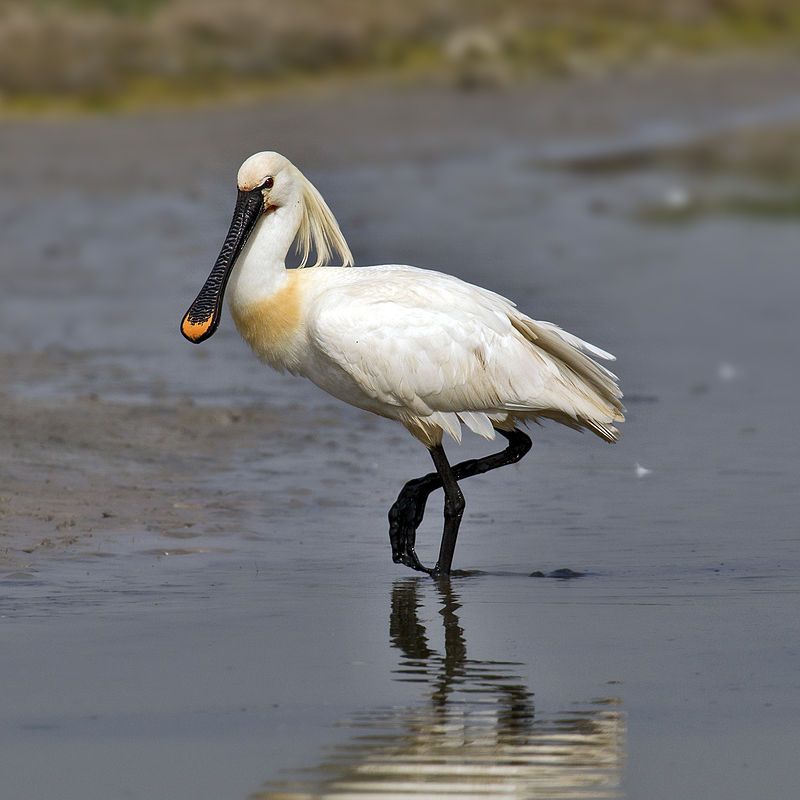
The Eurasian spoonbill, also called the common spoonbill, is a species of wading bird from the Threskiornithidae family. Found primarily in the Old World, this species can be found in many countries, including Europe, Africa, and parts of Asia.
The Eurasian spoonbill is a large bird, with a wingspan of up to 90 cm and a length of over a meter. It has a long and wide spoon-shaped bill, which gives it its name, and is the only member of its family with this kind of bill.
The Eurasian spoonbill is a white or light-colored bird, with black legs and a yellow face. It feeds mainly on fish, crustaceans, and aquatic insects, which it finds in shallow waters. In the winter, it migrates to warmer climates, such as Africa or the Middle East.
The Eurasian spoonbill is an important species, as it helps to keep the environment healthy by eating large amounts of food and thus helping to keep the population of certain species in balance.
| Kingdom | Animalia |
| Phylum | Chordata |
| Class | Aves |
| Order | Pelecaniformes |
| Family | Threskiornithidae |
| Genus | Platalea |
| Species | P. leucorodia |
3. Baikal Teal
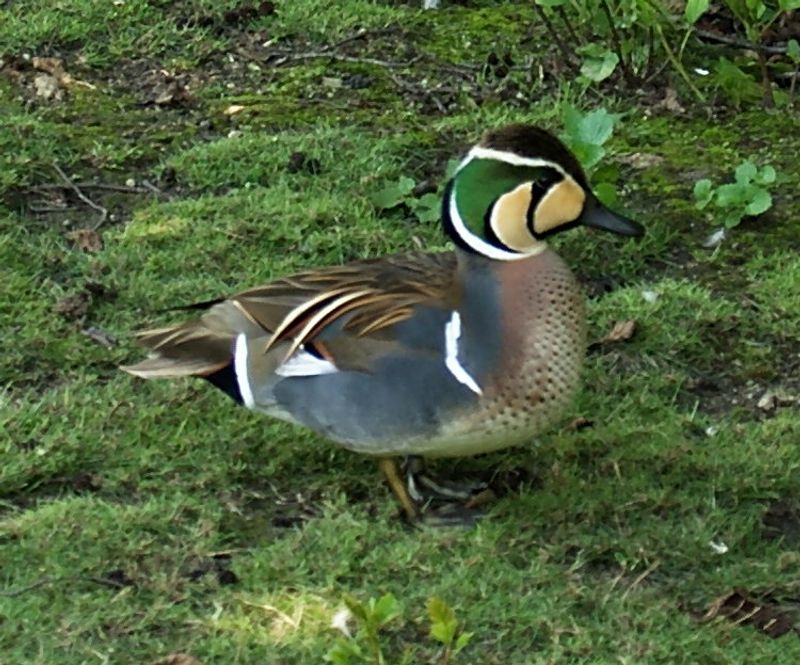
The Baikal teal is a species of dabbling duck that has two different names. It is commonly referred to as the bimaculate duck or squawk duck. This species of duck is found primarily in eastern Russia, where it breeds and builds its nests.
During the winter season, the Baikal teal migrates to East Asia, where food is more plentiful and the climate is more suitable. The Baikal teal is a small duck, with a length of approximately 28 centimeters.
It has a mottled brown and white coloring and a distinctive black and white head pattern which gives it the name bimaculate duck. The male and female of the species look similar, but the male tends to be slightly larger.
Its diet includes aquatic invertebrates, plant material, and some grains. This species of duck is not considered to be at risk of extinction. However, it is still classified as near threatened, as its population is still decreasing.
The main factors that are causing the decline of the Baikal teal population are the loss of suitable breeding and wintering habitats and the illegal hunting of the ducks.
Conservation efforts are ongoing to protect this species, and the Baikal teal has been listed in the Convention on International Trade in Endangered Species of Wild Fauna and Flora.
| Kingdom | Animalia |
| Phylum | Chordata |
| Class | Aves |
| Order | Anseriformes |
| Family | Anatidae |
| Genus | Sibirionetta |
| Species | S. formosa |
4. Red-crested Pochard
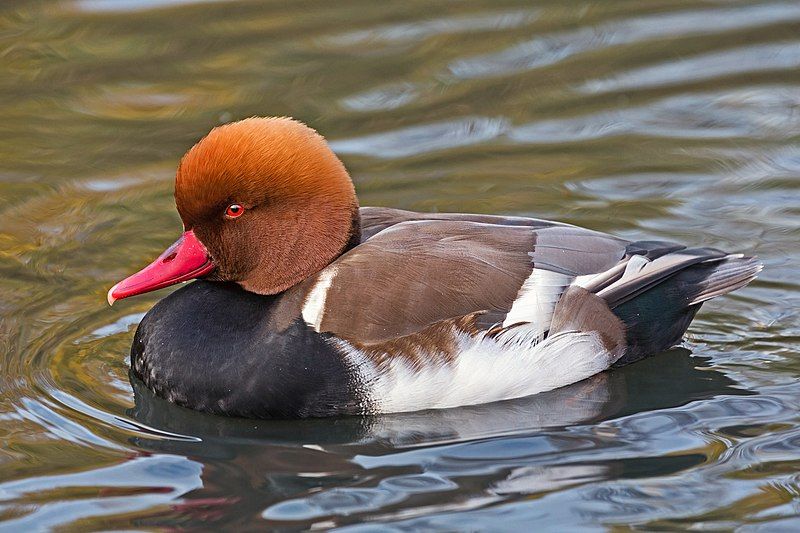
The red-crested pochard is a large, distinctive diving duck found in various parts of the world. Its scientific name is derived from the Greek word “Netta”, which means “duck”, and the Latin word “rufina”, which means “golden-red”.
This reflects the bird’s striking plumage, which is predominantly golden-red in color and is highlighted by a distinctive red crest. The red-crested pochard is a relatively large duck, typically weighing about 2.2 pounds and measuring up to 20 inches in length.
It is an aquatic bird, often found near freshwater lakes and rivers and feeds on aquatic plants, small fish, and insects. The red-crested pochard is an important species in the duck family and is often used for food and hunting.
| Kingdom | Animalia |
| Phylum | Chordata |
| Class | Aves |
| Order | Anseriformes |
| Family | Anatidae |
| Genus | Netta |
| Species | N. rufina |
5. Great White Egret
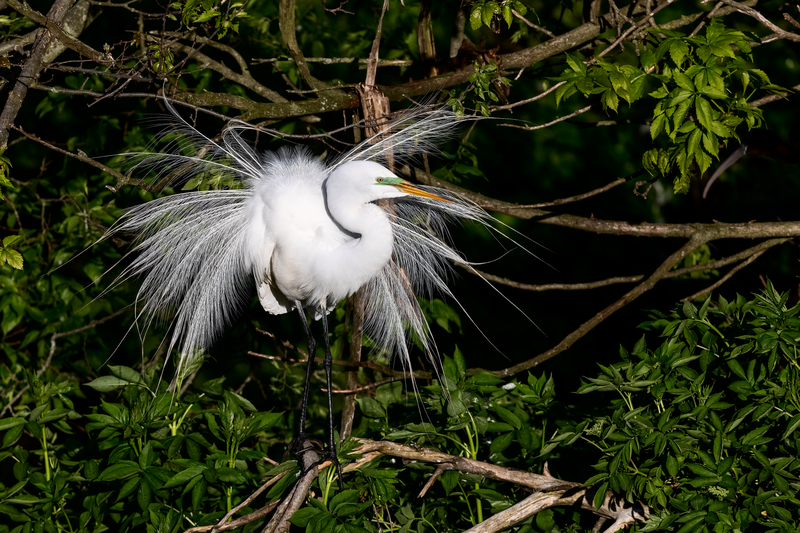
The great egret is a large bird, often referred to as the common egret, large egret, great white egret, or great white heron. It can be found in many parts of the world, including Asia, Africa, the Americas, and southern Europe.
This species has four subspecies, each with a slightly different look and behavior. Recently, the great egret has been spreading further north, making its way into more areas of Europe.
This is likely due to the increase in suitable habitats and a decrease in hunting that has allowed the species to thrive. As a result, the species is now quite common in many parts of the world.
The great egret is a beautiful bird, with white feathers, a long neck, and long legs. It is often seen wading in wetlands or standing atop trees in search of food. It feeds on small fish, frogs, and other aquatic animals, and is an important part of the local ecosystem.
| Kingdom | Animalia |
| Phylum | Chordata |
| Class | Aves |
| Order | Pelecaniformes |
| Family | Ardeidae |
| Genus | Ardea |
| Species | A. alba |
6. Little Curlew
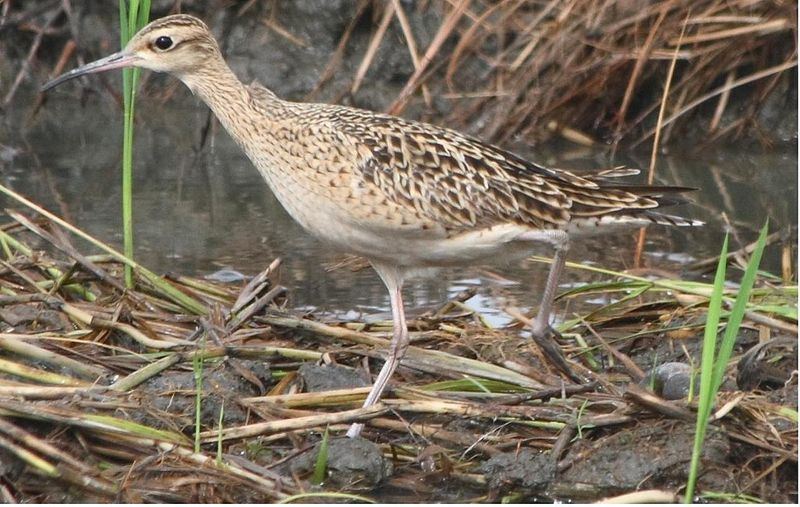
The little curlew is a species of bird belonging to the family Scolopacidae, which is a large family of wading birds. It is a very small bird, with its breeding grounds located in the northernmost regions of Siberia.
The little curlew is closely related to the North American Eskimo curlew, another species of bird found in the Scolopacidae family. The little curlew is a relatively small species of bird, with its body size being around 10 to 12 inches in length.
It has a dull brownish coloration on its wings and back, and a white belly. Its long bill is curved downwards, and it has short legs. Its legs are well-adapted for wading in shallow water, while its bill is well-suited for probing the mud for small invertebrates.
The little curlew breeds in the far north of Siberia, typically between June and August. Its habitat is generally wetland areas such as marshes, estuaries, and lake shores. It feeds on small aquatic invertebrates, as well as seeds and other plant matter.
The little curlew is migratory, and during the winter months, it can be found in western and southern Europe, as well as parts of North Africa and the Middle East.
The little curlew is an important species in the Scolopacidae family, as it is closely related to the North American Eskimo curlew. This species is now considered to be extinct, having disappeared from its breeding grounds in the late 19th century.
The little curlew is thus a vital reminder of the importance of protecting wild bird species, in order to ensure their survival for future generations.
| Kingdom | Animalia |
| Phylum | Chordata |
| Class | Aves |
| Order | Charadriiformes |
| Family | Scolopacidae |
| Genus | Numenius |
| Species | N. minutus |
7. Little Grebe
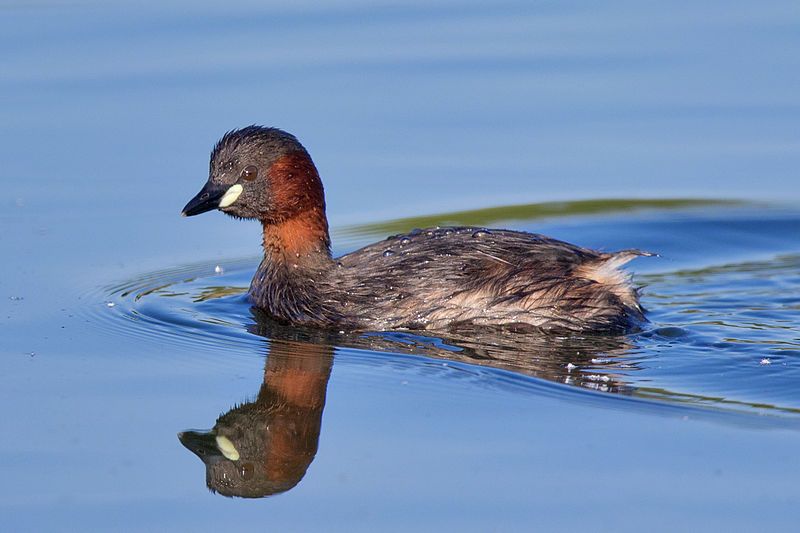
The little grebe, also known as dabchick, is a species of water bird belonging to the family of grebes. The name for its genus, takhus, comes from the Ancient Greek words ‘takhus’ which means ‘fast’, and ‘bapto’ which means ‘to sink under’.
The species name, ruficollis, is derived from the Latin word ‘rufus’ which means ‘red’, and ‘collis’ which means ‘neck’ and is derived from the Latin word ‘collum’ which means ‘neck’. This name is probably because of the reddish color of the little grebe’s neck.
The little grebe is a small water bird that is well suited to life in the water. It has webbed feet, a streamlined body, and the ability to dive underwater when threatened. Its diet consists of small fish, insects, and aquatic plants.
| Kingdom | Animalia |
| Phylum | Chordata |
| Class | Aves |
| Order | Podicipediformes |
| Family | Podicipedidae |
| Genus | Tachybaptus |
| Species | T. ruficollis |
8. Great White Pelican
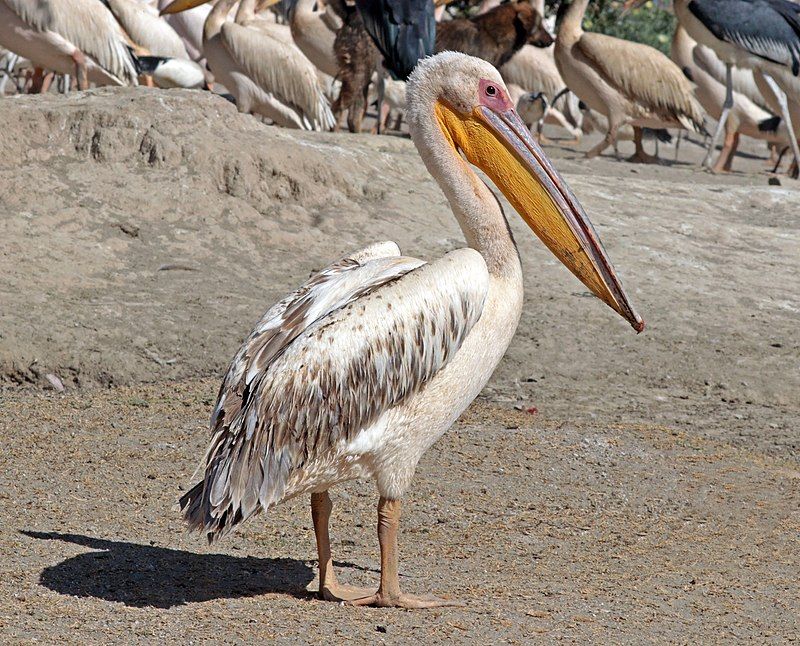
The great white pelican is a species of bird belonging to the pelican family. It is also referred to as the eastern white pelican, rosy pelican, or white pelican. This bird has a wide range and can be found breeding in southeastern Europe, Asia, and Africa.
They typically inhabit shallow lakes and swamps, where they can find plenty of food. The great white pelican is a large bird, with a wingspan of up to 11 feet. Its plumage is mostly white, with a blackish-brown patch on its wings and a pinkish hue on its throat.
They have a large bill that is used to scoop up fish from the water, which is their primary source of nourishment. In addition to fish, the great white pelican also feeds on amphibians, crustaceans, insects, and small mammals.
They typically hunt alone or in small groups, and will often work together to herd fish into shallow water, where they can be easily caught. The great white pelican is a social bird and can often be seen in large flocks in their breeding grounds.
They form long-term pair bonds and breed in colonies, typically laying two to three eggs at a time. The great white pelican is a fascinating bird that is an important part of many ecosystems.
They are considered to be a species of Least Concern by the IUCN, and efforts are being made to protect their habitat and ensure their survival.
| Kingdom | Animalia |
| Phylum | Chordata |
| Class | Aves |
| Order | Pelecaniformes |
| Family | Pelecanidae |
| Genus | Pelecanus |
| Species | P. onocrotalus |
9. Eurasian Bullfinch
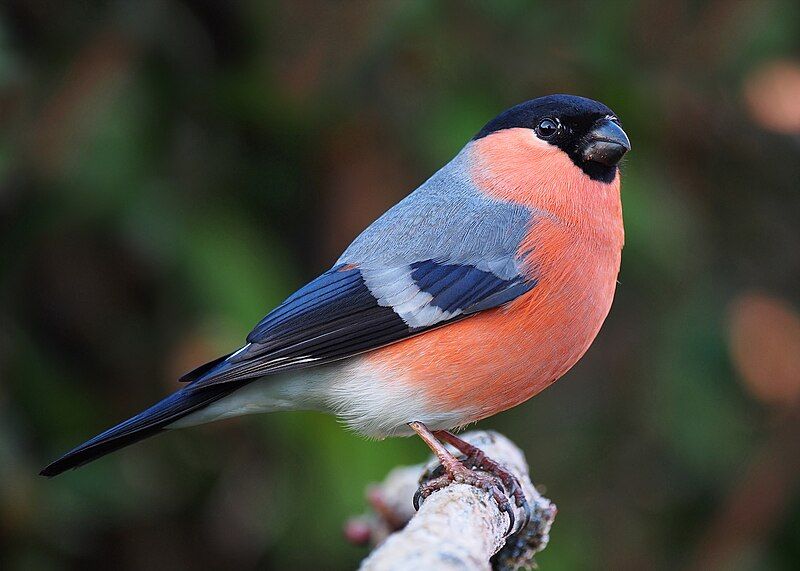
The Eurasian bullfinch is a species of small passerine bird belonging to the Fringillidae family of finches. It is a widespread species found throughout Europe, Asia, and parts of North Africa.
It is often referred to as the common bullfinch or simply the bullfinch, as it is the original bird to bear the name. The Eurasian bullfinch is a small bird with a length of around 14-16 cm and a wingspan of around 25 cm.
Its body is a soft grayish color with a black head and wings. The male has a reddish-pink throat, breast, and rump, while the female has a grayish-brown throat, breast, and rump. It has a black bill and black legs.
The Eurasian bullfinch is a sociable species, often seen in small flocks foraging for food in bushes and hedgerows. They feed mainly on the seeds of trees and shrubs and other small fruits.
They have also been known to feed on the buds and blossoms of fruit trees, as well as the green shoots of grain crops. The Eurasian bullfinch is a very adaptable bird and can live in a variety of habitats, ranging from open woodland and scrubland to farmland and gardens.
It is a resident species in many parts of its range, although some populations migrate south in winter. The Eurasian bullfinch is a popular species with birdwatchers due to its attractive plumage and its willingness to come to bird tables and feeders.
| Kingdom | Animalia |
| Phylum | Chordata |
| Class | Aves |
| Order | Passeriformes |
| Family | Fringillidae |
| Genus | Pyrrhula |
| Species | P. pyrrhula |
10. Eastern Spot-Billed Duck
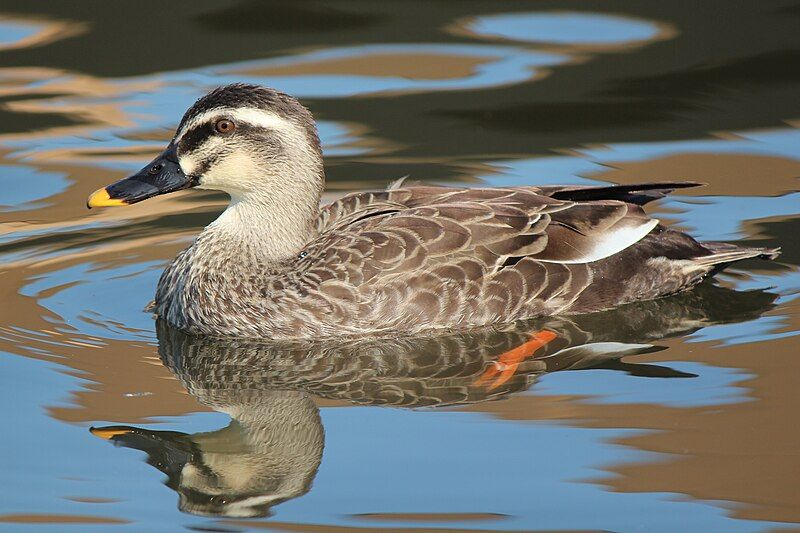
The eastern spot-billed duck, also known as the Chinese spot-billed duck, is a species of dabbling duck that is found in East and Southeast Asia.
It has a long history of being closely related to the Indian spot-billed duck, and both species were referred to as the spot-billed duck. The name of the eastern spot-billed duck comes from the yellow spot that is located on the bill.
It is believed that this spot is used to identify the species, as it is not found on the Indian spot-billed duck. The eastern spot-billed duck is a medium-sized duck, typically measuring between 45 and 60 cm in length.
They have a brownish-black plumage with a white belly and a white band around their neck. The most distinguishing feature of the eastern spot-billed duck is the yellow spot on the bill, which is used to differentiate it from other species.
The eastern spot-billed duck is a freshwater species that can be found in ponds, lakes, marshes, and other wetlands. They feed mainly on plants, small insects, and seeds. They form large flocks during the winter and migrate in the spring and fall.
The eastern spot-billed duck is an important species for conservation, as it is listed as Least Concern on the IUCN Red List. It is a species of concern due to its declining population, due to habitat loss, hunting, and pollution.
Conservation efforts are needed to protect the species and its habitat in order to ensure its survival.
| Kingdom | Animalia |
| Phylum | Chordata |
| Class | Aves |
| Order | Anseriformes |
| Family | Anatidae |
| Genus | Anas |
| Species | A. zonorhyncha |
11. Peregrine Falcon
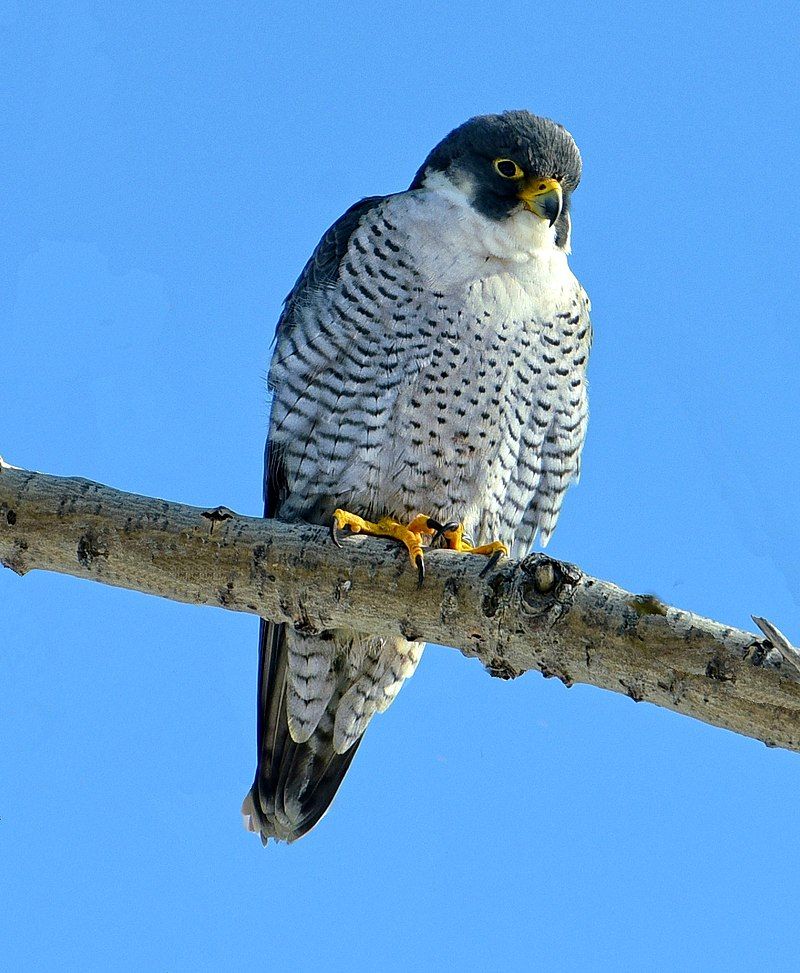
The peregrine falcon is a cosmopolitan bird of prey, meaning it can be found in many parts of the world. It is a large falcon, about the size of a crow, and is easily recognizable by its blue-grey back, barred white underparts, and black head.
It is often referred to simply as the peregrine, or as the duck hawk in North America. This bird is most well-known for its incredible speed; it is able to reach high speeds while diving, making it a formidable predator.
Reports have estimated that the peregrine falcon can reach speeds of up to 200 miles per hour while diving, making it one of the fastest birds in the world.
This incredible speed allows it to catch its prey quickly and efficiently, allowing it to survive in a wide variety of habitats. Due to its impressive speed and predatory skill, the peregrine falcon is a well-known and beloved bird of prey.
| Kingdom | Animalia |
| Phylum | Chordata |
| Class | Aves |
| Order | Falconiformes |
| Family | Falconidae |
| Genus | Falco |
| Species | F. peregrinus |
12. Amur Falcon
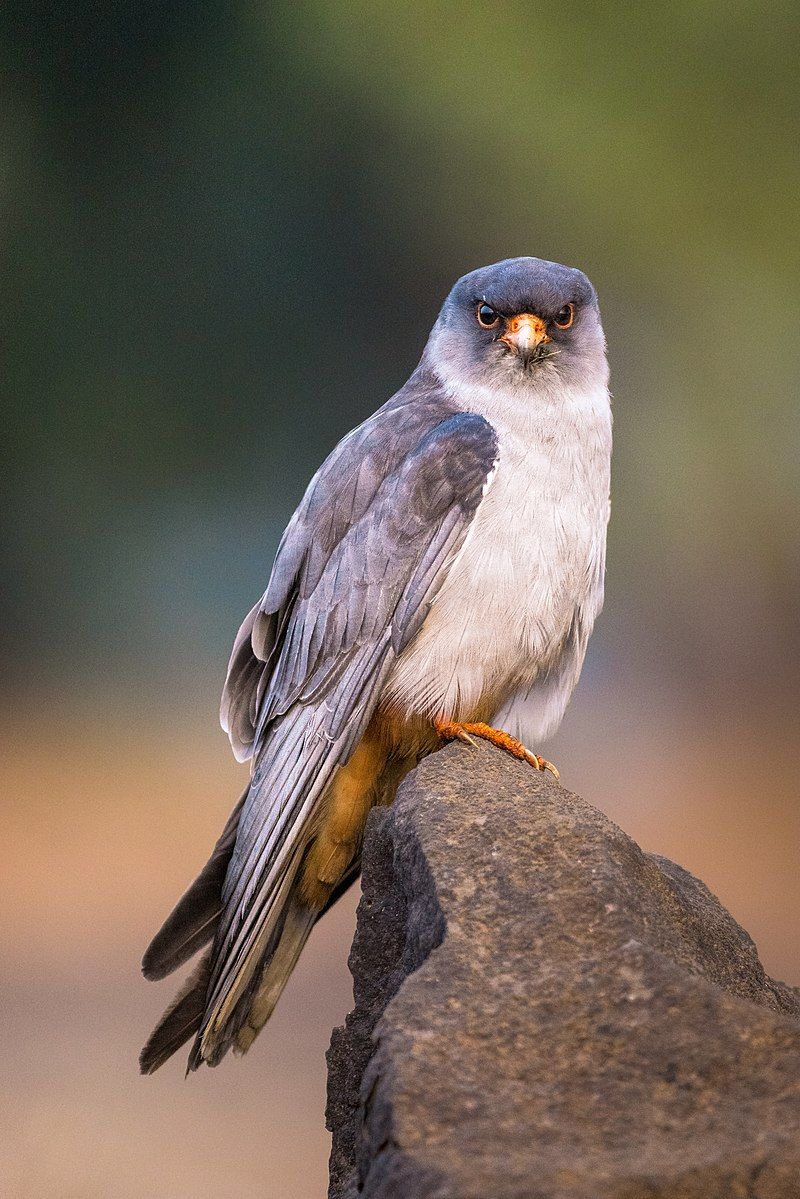
The Amur falcon is a member of the falcon family and is a small raptor. Its breeding grounds are located in south-eastern Siberia and Northern China.
During winter, large flocks of these birds migrate southward, crossing India and the Arabian Sea before reaching their wintering grounds on the coasts of Southern and East Africa.
This remarkable migration route covers thousands of kilometers and is a truly spectacular sight to behold. The Amur falcon is a strong and agile flyer, capable of covering long distances with relative ease.
Its wings are adapted for long journeys, and it uses its powerful vision to search for food while in flight. It feeds on insects, small reptiles, and other small animals, and the large flocks of these birds are often seen hovering over fields and pastures in search of a meal.
The Amur falcon is an important species in the region, and its large-scale migrations have become a celebrated event in many parts of the world.
Conservation efforts have been put in place to ensure the continued survival of this species, and it is hoped that the Amur falcon will continue to thrive for many years to come.
| Kingdom | Animalia |
| Phylum | Chordata |
| Class | Aves |
| Order | Falconiformes |
| Family | Falconidae |
| Genus | Falco |
| Species | F. amurensis |
13. Demoiselle Crane
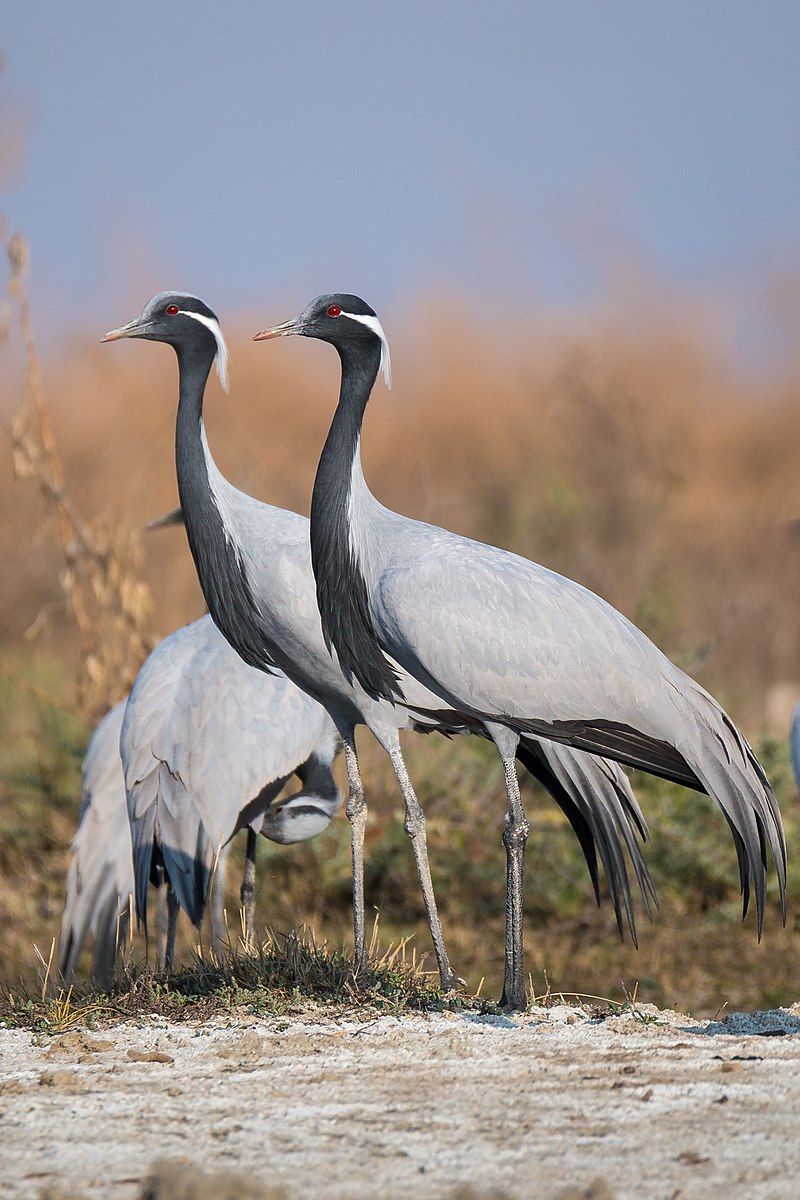
The demoiselle crane is a species of crane native to central Eurosiberia. Its range spans from the Black Sea to Mongolia and Northeast China. Additionally, there is a small breeding population of cranes in Turkey.
Demoiselle cranes are migratory birds, meaning they migrate from one place to another at different times of the year. During the spring and summer months, they can be found in Eurasia, while during the winter, many of them migrate to Africa.
These cranes are a species of large wading birds, with a wingspan of around 1.7 meters. The demoiselle crane is a medium-sized crane species, usually grayish-brown in color with a white patch on the throat. It has long legs and a long neck, as well as a pointed bill.
The males are usually larger than the females and have a black patch on their wings. The cranes feed mainly on plants, such as grasses, grains, and other vegetation. They also feed on small invertebrates such as insects, worms, and mollusks.
During the breeding season, the demoiselle cranes form monogamous pairs and build their nests in wetlands. They lay two to three eggs, which hatch after about 30 days. The young cranes stay with their parents for up to two years before they become independent.
The demoiselle crane is listed as vulnerable by the IUCN, due to its declining population and habitat destruction. It is also threatened by hunting and being killed by powerlines. Conservation efforts are in place to protect these birds and their habitats.
| Kingdom | Animalia |
| Phylum | Chordata |
| Class | Aves |
| Order | Gruiformes |
| Family | Gruidae |
| Genus | Grus |
| Species | G. virgo |
14. Cormorants
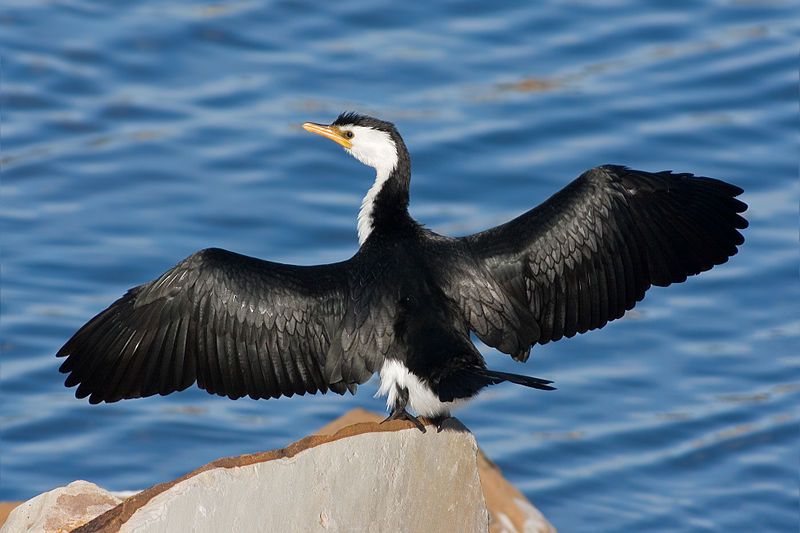
Phalacrocoracidae is a family of aquatic birds comprising of around 40 species. These birds are popularly referred to as both cormorants and shags.
Over the years, multiple classifications of the family have been proposed, but recently in 2021, the International Ornithologists’ Union arrived at a unified taxonomy of seven genera for the family.
This new taxonomy is helpful in better understanding the family dynamics and its evolution. Cormorants and shags are a widely studied avian family of birds due to their good adaptation to marine habitats and their wide geographical distribution.
Their distinct features like large webbed feet, long necks, small heads, and long tails make them easily identifiable in any environment.
They feed mainly on small fish, crustaceans, and mollusks. The newly adopted taxonomy of seven genera is based on the morphological characteristics of the species, such as the size and shape of their bills, the color of their plumage, and the presence or absence of certain feathers.
This classification system is also useful in distinguishing between closely related species, such as cormorants and shags, which are both members of the Phalacrocoracidae family.
The International Ornithologists’ Union has also proposed a conservation status for each species, which is based on the population size and the degree of threats faced by the species.
This allows conservationists to better understand which species are in need of urgent attention and protection. Overall, the new taxonomy of the Phalacrocoracidae family provides important insights into the family dynamics and its evolution.
It helps in understanding the characteristics of individual species, the differences between them, and the threats faced by them. This, in turn, helps to ensure the conservation of these species and their habitats.
| Kingdom | Animalia |
| Phylum | Chordata |
| Class | Aves |
| Order | Suliformes |
| Family | Phalacrocoracidae |
15. Common Pochard
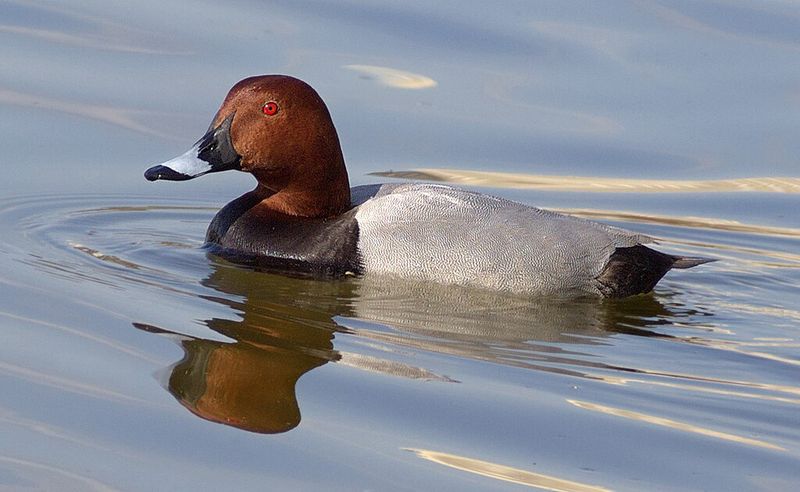
The common pochard is a medium-sized diving duck with a scientific name derived from two sources. The first source is Greek, specifically from the word Aithuia, which was used by ancient authors such as Hesychius and Aristotle to refer to an unidentified seabird.
The second source is Latin, specifically from the word Ferina, which means “wild game” and is derived from the Latin word fetus, meaning “wild”. This gives insight into the mysterious origins of the common pochard and its place in the natural world.
It is a wild waterfowl that has been around for centuries, and its name reflects its primitive nature.
| Kingdom | Animalia |
| Phylum | Chordata |
| Class | Aves |
| Order | Anseriformes |
| Family | Anatidae |
| Genus | Aythya |
| Species | A. ferina |
16. Great Crested Grebe
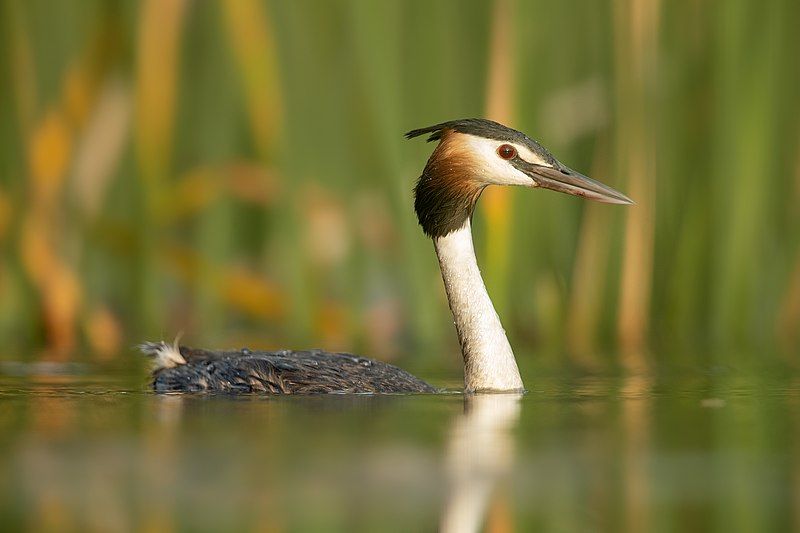
The Great Crested Grebe is a species of water bird that is part of the Grebe family. It is known for its elaborate mating display. This display usually involves both male and female birds taking part in a complex dance, during which they both bow and make a variety of calls.
The male also presents the female with a gift of a feather or a reed, as part of the courtship ritual.
After mating, the pair will build a nest together, usually constructed from reeds and grasses, and they will share the responsibility of incubating the eggs and raising the chicks. The chicks will remain with the parents until they are able to fend for themselves.
The Great Crested Grebe is an important species in its environment, helping to keep the water clean and providing food for other creatures.
| Kingdom | Animalia |
| Phylum | Chordata |
| Class | Aves |
| Order | Podicipediformes |
| Family | Podicipedidae |
| Genus | Podiceps |
| Species | P. cristatus |
17. Red-breasted Merganser
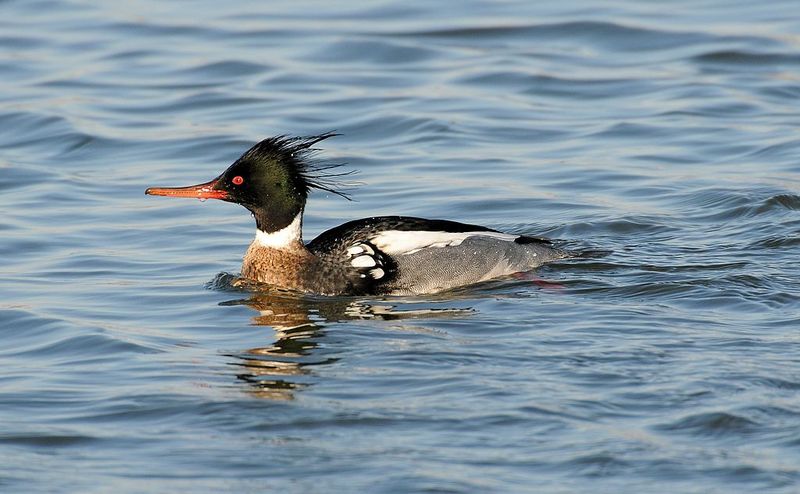
The red-breasted merganser is a species of duck that inhabits many parts of the Northern Hemisphere. It is easily recognizable due to its bright red plumage on the chest of the males, which is why it is often referred to as the red-breasted merganser.
This red coloration is only present during the breeding season and is not present at any other time. During the non-breeding season, the males have a grayish-brown coloration, much like the females.
The red-breasted merganser is an important species for the ecosystem as it is an important part of the food chain. It feeds on small fish, crustaceans, and aquatic insects, and is often preyed upon by larger carnivorous animals.
It also serves as an indicator of the health of the aquatic environment, as its presence or absence can indicate the presence or absence of its food sources.
In addition, the red-breasted merganser is a popular bird for birdwatchers and photographers, as its bright colors and distinctive features make it easy to spot.
| Kingdom | Animalia |
| Phylum | Chordata |
| Class | Aves |
| Order | Anseriformes |
| Family | Anatidae |
| Genus | Mergus |
| Species | M. serrator |
Conclusion
Irkutsk is home to a wide variety of birds, from rare and endangered species such as the Imperial Eagle to the more common species such as the Common Raven and Black-capped Chickadee.
The region’s wetlands, forests, and steppes provide an ideal habitat for many of these species, and a number of protected areas have been established to ensure the continued survival of the species.
Birdwatchers, conservationists, and scientists alike can all benefit from the many opportunities that Irkutsk has to offer in terms of bird watching and research.